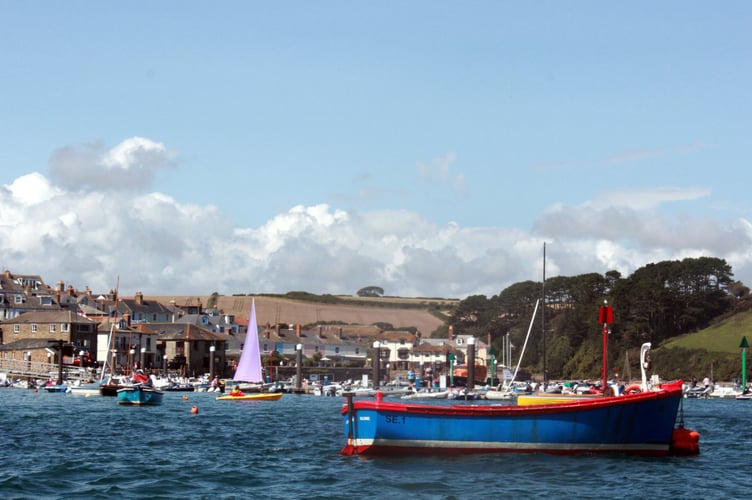Devon County Council is determined to introduce on-street pay & display parking to Salcombe and Dartmouth. At the full Salcombe Town Council meeting last week Cllr Kizzy Simms-Stirling told fellow councillors that at a meeting that included Traffic Management Team Manager Chris Rook and DCC Cabinet Member for Economic Recovery and Skills Cllr Rufus Gilbert that they had been told in no uncertain terms that Devon County Council would be introducing Pay & Display parking whatever the objections from Salcombe Town Council or the public.
They were though prepared to engage with STC if they wished on details such as where double lines are put, the length of free parking and whether meters would be installed or just notices with location numbers for RingGo payments.
Councillors decided to hold a working group meeting to decide on their response.
A DCC spokesperson said: "A policy to review parking management in key communities was agreed by Cabinet in November last year. We are currently in discussion with Salcombe Town Council, with the aim to shape a parking scheme to best fit the community. "Pay & display is used widely across the UK and Devon. We believe that pay & display is one of the components that is needed to ensure a healthy high street and community; it encourages turnover, reduces congestion, and may encourage some to walk and cycle more. " In a document supplied to us the proposal was that free parking for 30 minutes will be considered where appropriate to encourage shorter stays, high turnover and improve availability of parking opportunities in high street locations:
‘Where there are options to stay for an hour or more a free 30 minute tariff will always be provided to encourage a shorter stay. A 30 minute ticket will be available from the machine without charge.
Where the existing maximum stay is of less than an hour (i.e. 30 or 45 minutes), we will set a single low cost tariff, typically 20p. ‘Alternatively, at the local County Councillor’s request, we will extend the maximum stay to one hour to allow for a free 30 minute period to be introduced. Case studies indicate that most users still opt for the shorter free stay so turnover will be maintained and in many cases improved. This means that many of the visits to your high street can remain free.
They then gave a couple of case studies saying: A number of communities already have a Pay & Display with free tariff available to visitors, this offer is well used. In Ilfracombe, in the past 12 months 74.5 per cent of all stays used a free ticket. In Dawlish, 65.5 per cent of all stays used a free ticket. The document stated: ‘The availability of parking is critical to attracting visitors to our communities and high streets. With visitors encouraged to opt for a free 30 minute stay or to use the off street car parks for stays of over an hour, turnover and footfall will be maximised on the high street. With the high street parking opportunities being more available to visitors, and priced to encourage use of well sign posted off-street car parks, the recirculation of vehicles “looking for the cheaper option” in the high street will be reduced; this means less congestion and improved air quality. Enforcement of pay & display areas is much easier, meaning increased turnover (and compliance), and allowing our finite enforcement resource to spend time dealing with parking issues elsewhere in your community. ‘On high streets it is the norm that the time permitted to park will be limited. There are two mechanisms available to manage this. The first being Limited Waiting and the second Pay & Display. ‘With Limited Waiting a Civil Parking Enforcement Officer (traffic warden) will need to visit the street and log all vehicle registrations, they will then need to plan their beat to return to that location to repeat the process after the end of the limited waiting period (but before the “no return” period expires). This is extremely laborious, and the presentence of the CEO becomes well known to traders and workers who can easily abuse the restriction meaning that spaces do not turn over as frequently as would be desired. With P&D there is only one visit required and only data relating to vehicles parked in contravention needs to be gathered. There is a time saving of between 50 per cent and 75 per cent, and improved compliance meaning spaces will turn over more readily.
On high streets it is the norm that the time permitted to park will be limited. There are two mechanisms available to manage this. The first being Limited Waiting and the second Pay & Display. In answer to why they chose Salcombe it was stated: ‘We have worked with our Economy team to focus on communities with the highest retail occupancy first; these have the greatest need for additional traffic management.
The busiest areas of our communities will be prioritised for review, for example town centre or seafront locations. These locations are more likely to be affected by congestion and recirculation of traffic looking for parking opportunities.’ We believe that pay & display is one of the components that is needed to ensure a healthy high street and community; it encourages turnover, reduces congestion, and may encourage some to walk and cycle more.





Comments
This article has no comments yet. Be the first to leave a comment.